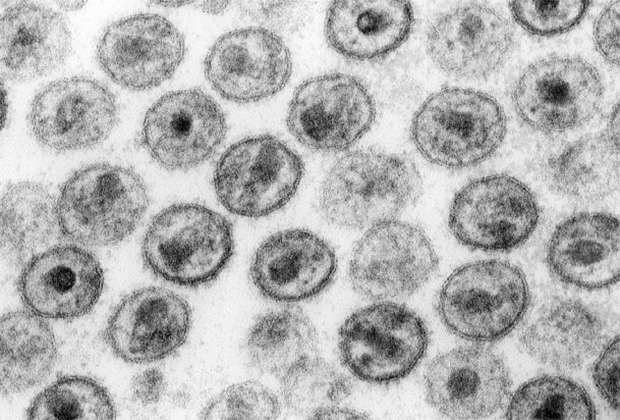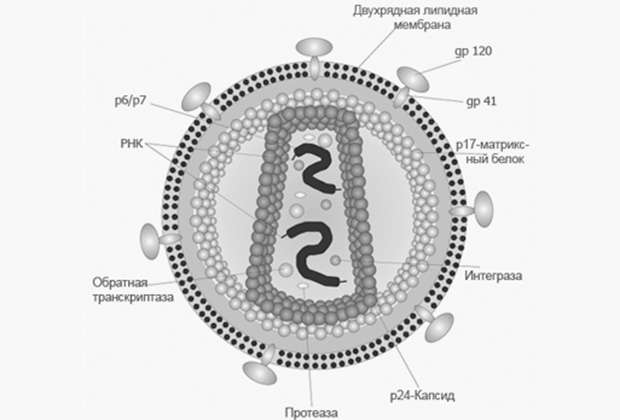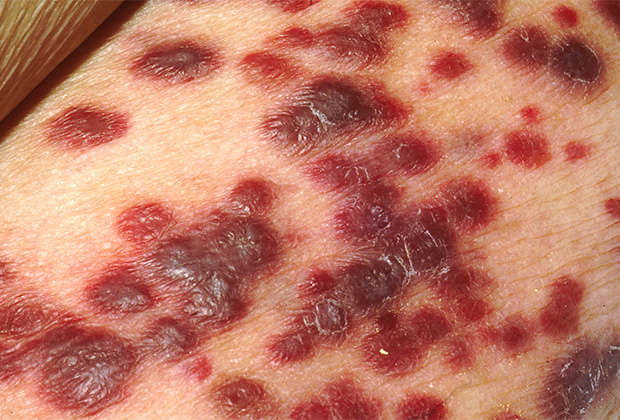
Currently, several pandemics are raging on Earth at once. The culprit of one of them is the SARS-CoV-2 coronavirus, and the other flared up exactly 40 years ago, when scientists were faced with an unknown and fatal disease at that time. It is now known as AIDS. Caused by the human immunodeficiency virus. Until now, there is no vaccination, no guaranteed cure for the infection, which continues to claim the lives of thousands of people. Lenta.ru tells about the history of the HIV pandemic and how it can be confronted.
Unknown contagion
On June 5, 1981, the Centers for Disease Control and Prevention (CDC) reported unusual cases of pneumonia caused by the microscopic fungus Pneumocystis jirovecii in five previously healthy homosexual youths in Los Angeles. This type of infection occurs exclusively in severely immunocompromised patients. All five men, two of whom died soon after, had cytomegalovirus (CMV or herpes simplex virus type 5), which can cause diseases of varying severity. Initially, doctors suggested that the cause of pneumonia was a weakening of the immune system caused by CMV. However, more data was required to confirm this.
Then no one knew that this was only the first signal of a future pandemic of a deadly and insidious virus that covertly undermines the body's defenses and brings it to a terminal state within a decade. Soon it was reported that 26 men had Kaposi's sarcoma, a cancer in an unusually aggressive form. In some, this was accompanied by infections such as Pneumocystis pneumonia and necrotizing toxoplasmosis of the central nervous system. Kaposi's sarcoma usually occurs in older men, so an outbreak in younger people who also have pneumocystis has led scientists to speculate that it has something to do with five previous cases of pneumonia.

Photo of HIV viral particles. Image: Wikipedia
By the end of the year, doctors had recorded 270 cases of severe immunodeficiency among gay men, with 121 patients having died. In June 1982, the number of cases among gay men in Southern California suggested that the cause of the immunodeficiency was sexual, and the syndrome was called Gay Associated Immunodeficiency (or GRID). Later that month, a strange illness was reported in hemophiliacs and Haitians, leading many experts to speculate that the infection originally originated in Haiti and is not confined to homosexuals. In September, the CDC first used the term AIDS (Acquired Immunodeficiency Syndrome), describing it as a disease (Pneumocystis pneumonia, Kaposi's sarcoma, and other opportunistic infections) that arises from a defect in the immune system in a patient with no other cause. reducing resistance to this disease.
At that time, there was still no reliable method for detecting AIDS, and experts did not know what caused it, and how it was transmitted. In January 1983, AIDS was discovered in women who were sexual partners of sick men. This allowed scientists to speculate that the disease could be transmitted through heterosexual contact. Children who could be infected from their mothers before or after their birth also began to get sick with AIDS. Although the pathogen has not yet been isolated, epidemiologists have been able to identify all major routes of transmission, excluding accidental contact, food, water, air and surfaces. By the end of 1983, 3,064 AIDS cases were known in the United States, with 1,292 deaths. In 30 years, the number of deaths in the world will rise to almost a million.
Immunity Breaker
In 1983, the virus that causes AIDS was independently isolated by several laboratories. At the Pasteur Institute (France), a group of specialists led by Luc Montagnier named LAV (a virus associated with lymphadenopathy), and scientists at the National Cancer Institute (USA) discovered a virus in an AIDS patient, which they attributed to the group of human T-lymphotropic viruses (HTLV). They later announced that the HTLV-III retrovirus they discovered was likely the cause of AIDS and was identical to the LAV virus. In 1986, it became clear that HTLV-III and LAV are the same virus. In 1984, scientists at the University of California also isolated what they called an AIDS-associated retrovirus in patients.

The structure of the HIV virion. Image: Wikipedia
In 1984, scientists were convinced that LAV (or HIV) was the causative agent of AIDS. Evidence of the link between HIV and AIDS was that the virus was always shed from AIDS patients or even before they developed immunodeficiency. Researchers successfully cultured the pathogen on activated T-lymphocytes expressing the glycoprotein CD4, which were killed by the virus, and even characterized its genome, which turned out to be longer than the retroviral genomes known by that time.
Internal war
HIV is firmly attached to CD4 and accessory cellular receptors CXCR4 or CCR5 (or both). After that, the cell membrane and viral envelope fuse, and the pathogenic RNA gets inside. By reverse transcription based on viral RNA, DNA is synthesized, which is sent to the cell nucleus and inserted into the human genome. For incorporation, it is necessary that the lymphocytes be activated, for which they need to recognize antigens. The inserted viral DNA is called a provirus and is the source of viral messenger RNA, which enters the cytoplasm, where it participates in the assembly of HIV proteins.
Both viral proteins and RNA, which makes up the HIV genome, move to the cell membrane, where virions – complete viral particles – are assembled. Virions break away from the cell surface, destroying the membrane and causing its death. Within eight hours, they must infect new cells before they die. The acute phase of HIV infection develops, as the virus begins to infect various tissues and organs. The patient experiences flu-like symptoms, including fever and malaise. This is followed by a latent period of the disease.

Kaposi's sarcoma. Photo: Wikipedia
Naturally, the immune system tries to fight the virus, slowing the progression of the disease. However, HIV gradually destroys CD4 cells and the virus multiplies. The latent period lasts 5-10 years and can be characterized by an increase in lymph nodes, which is called lymphadenopathy. However, in the end, suppression of immunity begins, concomitant diseases, for example, herpes, begin to appear. AIDS is the last, terminal stage of HIV infection. Human immunity is depressed so much that tumors appear and opportunistic infections develop, which lead to the death of a person in the absence of treatment in just one to three years.
Endless healing
Prevention is the main way to contain the HIV pandemic. You should be aware that infection can occur through contact of mucous membranes or damaged skin with contaminated body fluids, such as blood, semen, breast milk or vaginal secretions (but not saliva). The main routes of transmission: unprotected intercourse, regardless of sexual orientation, drug use through injection, breastfeeding and blood transfusion.
At the moment, a complete cure of a person with antiretroviral therapy is impossible precisely because of proviruses, which can be activated even after prolonged antiretroviral therapy. At the same time, the right therapy can delay the onset of AIDS indefinitely, probably for life. Currently, the CRISPR / Cas9 technology is actively developing, with the help of which it is possible to make changes in the DNA of human cells. It is believed that it can become the basis for an effective therapy that eliminates proviruses from the genome of infected cells.
There are people with genetically determined defenses against certain strains of HIV. This is due to the presence of mutations in cellular receptors that HIV uses to infect cells. Some drugs used to treat infections target those components of the virus that interact with these receptors. Several dozen therapeutic agents have been developed that block different stages of virus infection of a cell, from its penetration and ending with the formation of virions.
Only two people in history have undoubtedly fully recovered from HIV, but these cases are exceptional: the treatment was carried out through bone marrow transplantation from a donor with a mutation in the CCR5 gene. Such therapy is not safe and is used only in exceptional cases, for example, in the treatment of blood cancer. Doctors suggest that there is still a third case of complete cure thanks to antiretroviral therapy, however, in this case, the possibility of a relapse of the disease cannot be ruled out.

